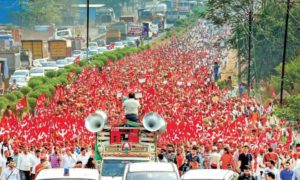Farm bill; ‘bullock -capitalists’ and policies

The Bills related to farming community have taken an interesting political turn with the resignation of a minister belonging to an old ally of ruling party.
This political event is certainly an interesting twist as political activities by and large have either been at a standstill or revolving around the pandemic issue.
However, with the beginning of the monsoon Parliament session, the all-time favourite topic of Indian politics has been brought to the fore once again.
Issues relating to small and marginal farmers have always dominated Indian politics.
Having observed the primacy of the role played by small and marginal farmers in silently setting the political agenda of Indian politics, the famous political scientist couple Rudolph and Rudolph started a new phenomenon ‘ Bullock capitalist’.
They observed, that the huge number of small and marginal farmers have very negligible amount of ‘capital’ in their hand, an amount which is just sufficient to sustain only two bullocks.
They remain vulnerable to the bounty of nature, middlemen, money-lenders and lack of coherence policies.
As agriculture happens to be the main source of income of nearly 58% of India’s population, the ‘Bullock capitalists’ decide the contours of political economy.
The agrarian community has once again played a vital role in the recent stirring of Indian politics.
Keeping in mind the sensitiveness of the agrarian community, the central government had initiated Pradhan Mantri Nidhi Yojana under Union Budget 2019-20 which prescribed for a minimum fixed pension of Rs.3000 to eligible small and marginal farmers.
In addition, the Government of India extended a crucial support to the agrarian community with Transport and Marketing Assistance (TMA) which provides support for transport and marketing of agriculture products.
The latest farm bill is indicative of the bold reforms in agriculture sector in recent times.
The big-ticket reform in agriculture is the permission extended to farmers to sell their produce outside APMC ‘mandis’ to whoever the farmers wish to sell.
It is expected that the small and marginal farmers will be benefited as they won’t have to go through the channels of mandi or middlemen.
It is pertinent to mention here that there exists a strong relationship between the ‘bullock capitalists’ and the traditional big land owners across the country.
Many times, due to financial vulnerability the small and marginal farmers approach land-owners for money which they get instantly without any collaterals.
This informal relationship turns out to be inter-generational and embedded in personal relationship; though, financially disadvantageous to the ‘bullock capitalists’.
In technical economic terms, this is known as ‘inter linkages’. Technically an interlinked transaction in Indian agriculture happens when there is an exchange of present for future claims and hence there is always an element of implicit credit.
Since the exchange contract is informal and culturally embedded, policy initiatives like easy credits by government fail.
So, the ‘bullock capitalists’ remain inside the vicious cycle of inter-linkage of credit and agriculture.
These reforms initiated by the government intend to specifically hammer such inter-linkages.
In states like Haryana and Punjab, the ‘Arhatiyas’ play the crucial role in strengthening the inter linkages over the years. Informal credit without collateral and flexible payments make the system thrive despite proving financially disastrous for the small and marginal farmers.
The policy initiatives towards disabling of interlinkages in agriculture require persuading the small and marginal farmers to opt for the credit from government institutions.
The application of flexible repayments and instant credit can be implemented through farmers cooperatives based on ‘social capital’ principle.
Without leveraging either on cooperatives or social capital, policy measures will continue to be only big announcements.
There remains another angle to the vexed problem.
The flourishing political interlinkages of big landowners and the political dispensation provide necessary boost to stall any bold policy measures. And, this is the root of the current political storm.
In Punjab, the shift in agriculture productions backed by supportive electric and water charges has changed the political economy landscape of agriculture over the last couple of years.
The process of reform in any sector remains a tough and herculean political task. In addition, implementing reforms require political astuteness and strong leadership.
The 10th Agriculture census 2015-16 released in 2018 indicates that the ‘bullock capitalists’ i.e. small and marginal farmers with less than two hectares of land constitute 86.2% of all farmers in India; but, crucially, own only 46.3% of the crop area.
In addition, the report indicates that during 2010-11 and 2015-16, the proportion of small and marginal farmers grew from 84.9% to 86.2%.
The author is a Policy Analyst and can be reached at 9868766705.












































